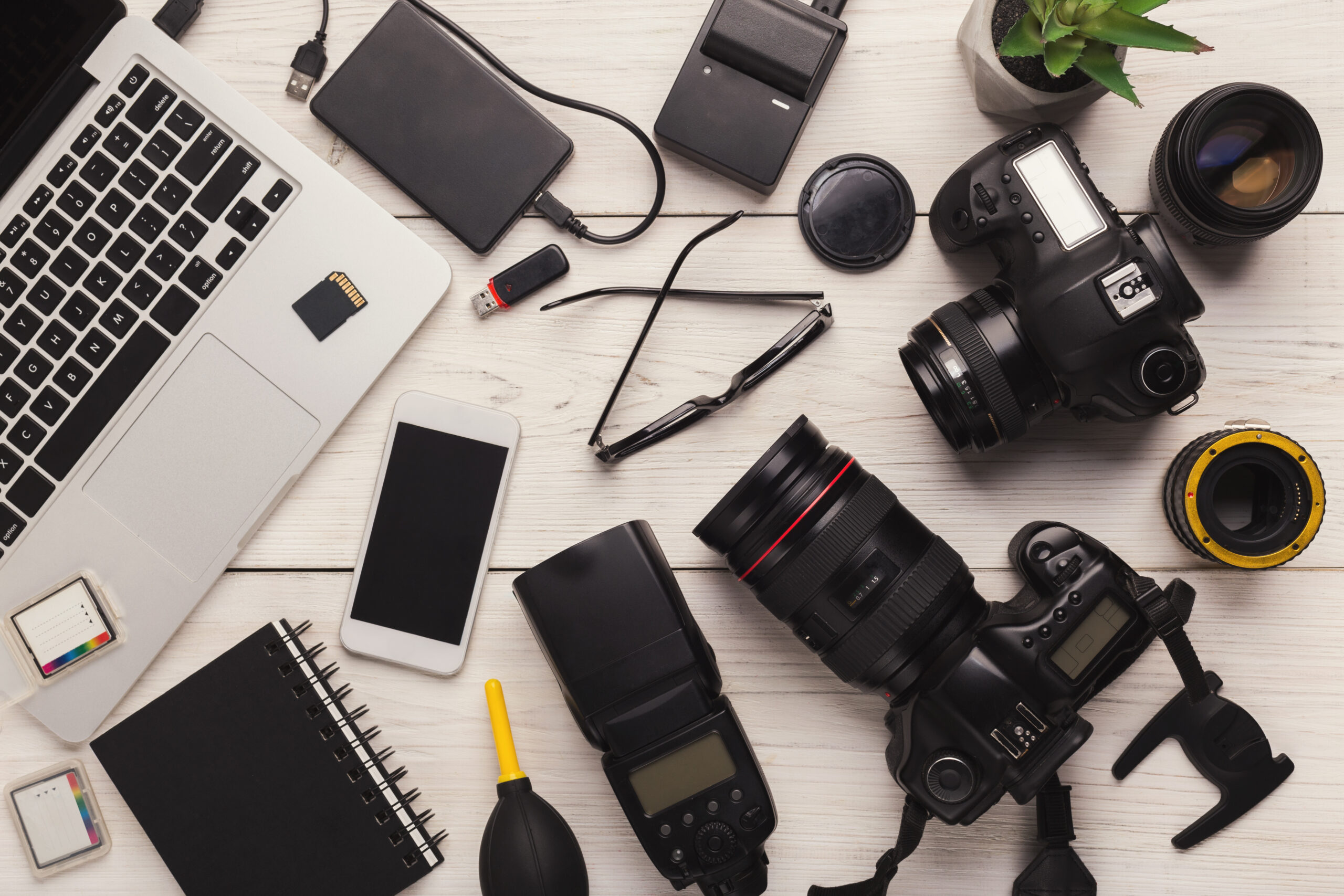Are you new to photography and wondering how to make the most of your DSLR camera? Understanding the basics of DSLR photography is the first step toward capturing sharp, creative, and professional-looking images.
Whether you’re photographing landscapes, portraits, or products for your business, knowing how to adjust your camera settings gives you more control and better results than shooting on auto mode.
What Is a DSLR Camera?
A DSLR (Digital Single-Lens Reflex) camera uses a mirror system to reflect light from the lens up into an optical viewfinder. This gives you a true-to-life preview of your shot before you take it. DSLRs are popular because they allow interchangeable lenses, manual settings, and higher image quality than most smartphones or point-and-shoot cameras.
The Key DSLR Photography Basics
1. Aperture
Aperture controls how much light enters your lens. It’s measured in f-stops (like f/2.8, f/4, f/11). A wide aperture (low f-stop) creates a blurred background, perfect for portraits. A narrow aperture (high f-stop) keeps more of your image in focus, great for landscapes.
2. Shutter Speed
Shutter speed determines how long your camera’s sensor is exposed to light. Fast shutter speeds (1/500s or higher) freeze motion, while slow shutter speeds (1/30s or lower) create motion blur or light trails.
3. ISO
ISO controls your camera’s sensitivity to light. Low ISO (100–400) keeps images sharp and clean, while high ISO (1600 or above) helps in low-light but may add grain (noise) to your photos.
4. Composition
Great photography isn’t just about settings. Use the rule of thirds, leading lines, and symmetry to compose visually appealing shots.
5. Practice and Experiment
Photography is a skill that grows with practice. Try shooting in different lighting conditions, angles, and styles to understand how each setting affects your results.
Why Learn DSLR Photography Basics?
Mastering these fundamentals allows you to:
- Take creative control instead of relying on auto mode
- Capture sharper, more professional-looking photos
- Build a foundation for advanced photography techniques
If you’d like to see how I use these skills in my work, explore my instagram page.







Leave a Reply